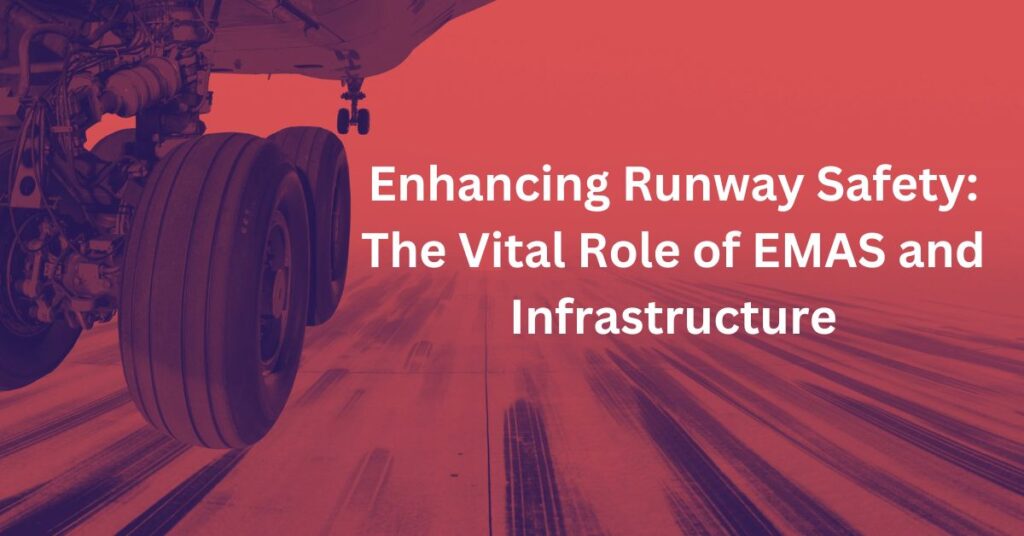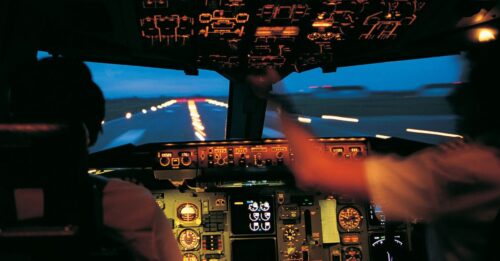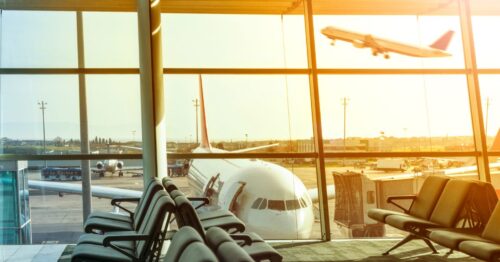
Newsroom

18.07.2023
Enhancing Runway Safety: The Vital Role of EMAS and Infrastructure
Safety is a top priority in the aviation industry, and airports play a crucial role in ensuring the well-being of passengers and aircraft operations. Among the various measures implemented to enhance runway safety, Engineered Materials Arresting Systems (EMAS) and robust infrastructure stand out as key components. In this article, we will explore the significance of EMAS installations and infrastructure development in promoting safety and driving operational excellence at airports.
Engineered Materials Arresting Systems (EMAS):
EMAS installations have revolutionized runway safety by providing a reliable solution to minimize and reduce the consequencens of runway excursions and mitigating potential accidents during takeoff and landing. These innovative systems consist of crushable material strategically placed at the ends of runways, serving as an engineered buffer zone. Upon impact, the EMAS absorbs an aircraft’s energy, allowing for controlled deceleration and preventing collisions with obstacles or terrain beyond the runway.
Safeguarding Passengers and Aircraft:
EMAS plays a vital role in safeguarding passengers, crew, and aircraft. By extending the stopping capability of an aircraft, EMAS installations significantly reduce the risk of runway excursions, which can lead to severe accidents and injuries. The system’s ability to bring an aircraft to a safe stop, even in challenging conditions or unforeseen circumstances, enhances overall safety standards and instills confidence in travelers and industry stakeholders.
Robust Infrastructure Development:
Infrastructure development forms the backbone of efficient and safe airport operations. Well-designed runways, taxiways, aprons, and associated infrastructure contribute to seamless aircraft movements and enhance overall operational efficiency. A focus on infrastructure encompasses factors such as runway length, surface condition, lighting, signage, and overall maintenance. Investing in high-quality infrastructure ensures safe operations, minimizes delays, and supports sustainable growth in the aviation sector.
Collaboration for Enhanced Safety:
The successful integration of EMAS installations and robust infrastructure requires collaboration among airport authorities, regulatory bodies, airlines, and industry experts. Effective coordination ensures that safety considerations are incorporated at every stage of airport planning, design, construction, and ongoing maintenance. Collaboration also enables the sharing of best practices, lessons learned, and the adoption of innovative solutions to continuously enhance safety standards.
Future Perspectives and Industry Advancements:
As the aviation industry evolves, embracing technological advancements and innovative practices is essential for further enhancing runway safety. This includes leveraging materials for EMAS installations, incorporating smart technologies for real-time monitoring of infrastructure, and implementing predictive maintenance systems. Additionally, the integration of artificial intelligence, data analytics, and automation can further enhance runway safety by identifying potential risks and enabling proactive decision-making.
Conclusion:
Engineered Materials Arresting Systems (EMAS) and robust infrastructure are integral to ensuring runway safety and operational excellence at airports. EMAS helps minimizing and reducing the consequences of runway excursions and providing extended stopping capabilities, EMAS installations safeguard passengers, crew, and aircraft. Coupled with well-designed and maintained infrastructure, airports can optimize operational efficiency and deliver a safe and seamless travel experience. Through collaboration, industry stakeholders can work together to embrace emerging technologies and best practices, reinforcing the commitment to continuous improvement and ensuring a secure and sustainable future for aviation.

03.11.2023
EMAS Aircraft Arresting System | Safeguarding Runway Safety and Economic Viability
In the fast-paced world of aviation, safety is paramount. The consequences of a runway overrun can be devastating, not only in terms of human lives but also economically. Have you ever considered the impact of an overrun? The answer is not as simple as it may seem.
Read more
23.10.2023
EMAS Maintenance Cost: How to Preserve Your Investment
As an airport operator, investing in an Engineered Materials Arrestor System (EMAS) is crucial to ensure passengers' safety. EMAS is an innovative safety strategy that prevents aircraft overruns and is designed to stop an airplane in the event of a runway overrun or undershoot. However, like any investment, proper maintenance is crucial to preserving its effectiveness and prolonging its lifespan.
Read more
13.10.2023
The Hidden Costs of Runway Excursions: Beyond Financial Implications to Brand Reputation
Runway excursions pose significant safety risks in aviation, but the consequences extend beyond immediate physical damage and potential injuries. The financial costs associated with these incidents are substantial, encompassing not only direct expenses but also indirect losses linked to brand reputation. This article delves into the multifaceted costs of runway excursions, exploring both the financial […]
Read more02.10.2023
Runway Safe Group initiate partnership with SARSYS-ASFT
Runway Safe is pleased to announce that we will be the exclusive distributor in North America for the SARSYS-ASFT product suite. With this partnership Runway Safe will enhance the protection of the runway environment with Continuous Friction Measuring Equipment (CFME), Runway Weather Information System (RWIS), Multi Information Data Assessment System (MIDAS), SNAp 2.0 – For […]
Read more
22.09.2023
Runway Safe’s arresting system EMAS, is expected to be perfect when an imperfect event occurs.
Safety can never be compromised when a runway excursion occurs! Safety is our mission! Our priority is to improve airport operational safety in the event of an aircraft runway excursion. Excursions are the most common type of aviation accident worldwide. Almost one out of four aviation accidents involve a runway excursion. However, excursions are one […]
Read more